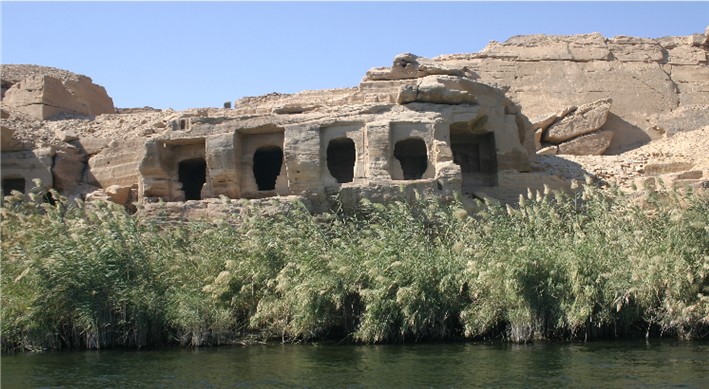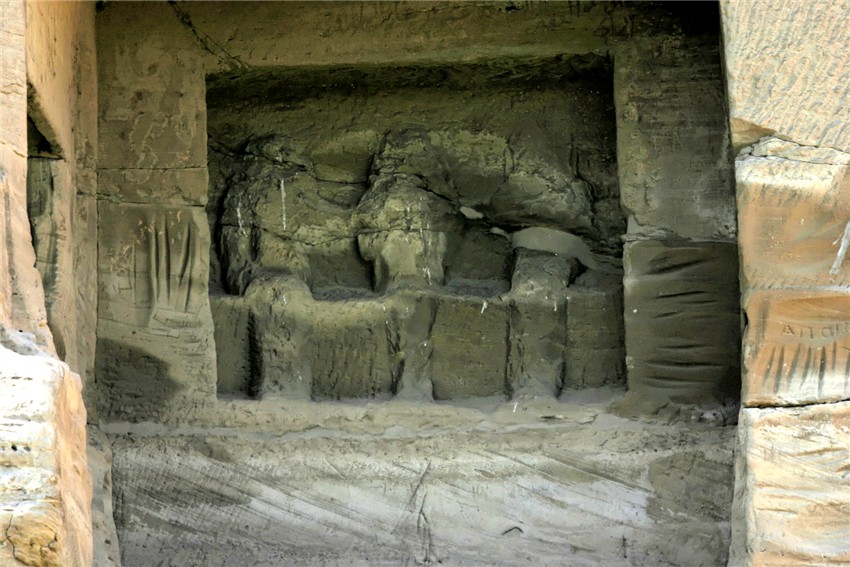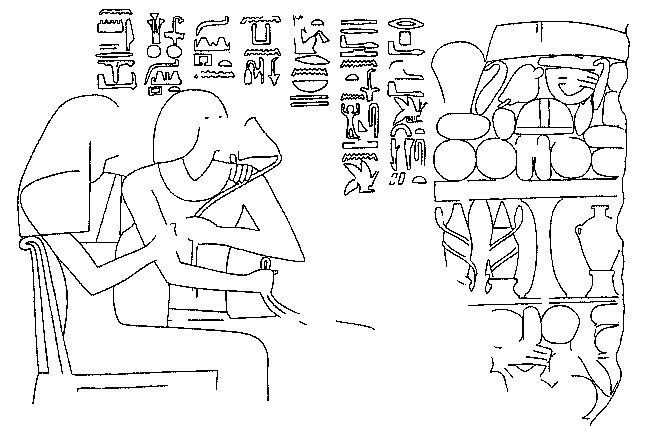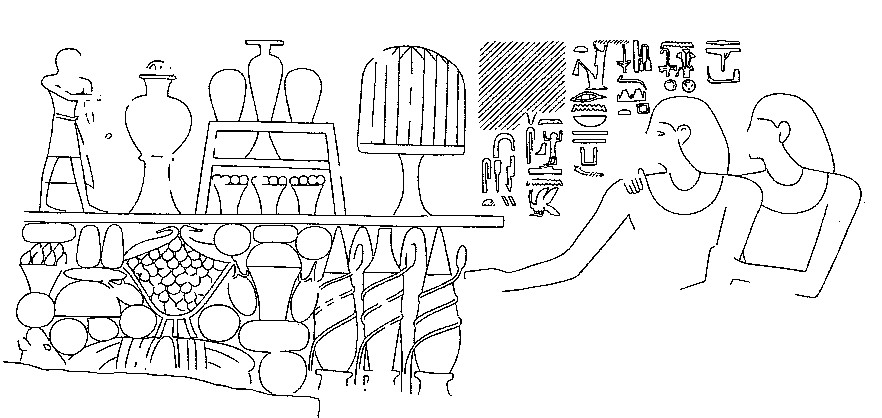| |
Shrine No. 12 |
last update:
26.03.2008
|
Data
| Shrine No. |
Name /
Transliteration |
Date |
Distance to the Speos of Haremhab
[~ m] |
Remarks |
| 12 |
Min-nakht |
Thutmosis III |
364 |
|
| |
|
|
|
|
| All data according to Caminos, 1963 |

|
From right to left the shrines No.: 12 (Minnakhte), 13 (Senneferi), 14 (Nehesj),
15 (Hapuseneb), 16 (Senenmut), and - destroyed - 17 (User-amun), all built
during the reign of Hatshepsut and Thutmosis III (photo: E. Noppes). The
entrances of all shrines were set into shallow recesses formed by cutting back
the face of the rock. |

|
The shrine of Min-nakhte was hewn directly above the water's edge, today it is
markedly destroyed. The facade is completely lost, also missing a parts of the
ceiling and tie northern (right) wall. These destructions are due principally to
quarrying sandstone in antiquity. |
|
Furthermore, the south had been damaged by a doorway cut through the wall to the
shrine of Senneferj (No. 13). This doorway - and others - had probably been cut
by people who, at later date, used the shrines as their home. |
|
The decoration of the preserved walls had been damaged by the practice of
scraping walls to collect stone dust.
|

|
Remaining part of the facade of shrine No. 12 as drawn by Caminos (1963). |
|
The 1st register shows the usual winged sun-disk (BHdtj).
Its name "[The] Behedeti" had been carved on either end. |
The remains part of the 2nd register allows the identification of the text that
reads:
"anx nTr nfr Mn-khpr-Ra mr
[Jmn] Life to the Good God, Men-kheper-Ra, beloved of [Amun]."
The name of Amun has been destroyed by the Akhenaton iconoclasts. |

|
Remaining part of the north wall of shrine No. 12 as drawn by Caminos (1963). |
|
Except the western part the north wall had been quarried away. The remaining
scene show a man and a woman sitting before table piled with offerings.
According to the accompanying inscription the man is the: |
|
"hereditary prince and count, treasurer of the king of Lower Egypt, sole
friend, one whom the king of Upper Egypt made great, one whom the king of Lower
Egypt exalted, one whose fortune the lord of the Two Lands made, the king's
scribe, overseer of the granaries of Amun, Min-nakhte." |
|
Nothing is said about the woman behind him, most likely she is his mother or his
wife. |

|
Remains of the south of shrine No. 12 according to Caminos (1963). |
|
As already mentioned above the south wall was damaged by a doorway broken
through it to asses the adjacent shrine. The west side of the wall bears a
similar scene like the north wall. In the scene two men are shown sitting on the
right before offerings. According to the accompanying inscription the man is
the: |
|
"hereditary prince and count, treasurer of the king of Lower Egypt, sole
friend, one whom the king of Upper Egypt made great, one whom the king of Lower
Egypt exalted, one whose fortune the lord of the Two Lands made, the king's
scribe, overseer of the granaries of Amun, Min-nakhte." |
|
Nothing is said about the man behind him, most likely he is his father. |
|
Before the two men the offerings are presented in two registers, in the upper
one another man who is shown far left is presenting the offerings to Min-nakhte
and his companion. |
|
The western (rear) wall is mostly taken up by a nice with 3 seated statues (see
photo above). The niche is about 170 cm wide, 141 cm high, and at maximum 58 cm
deep. The bottom starts about 84 cm above the floor of the shrine. All three
statues are uninscribed and so badly damaged that it is not possible to
recognize the sex of the people presented. |
|




